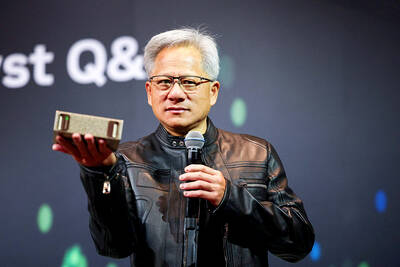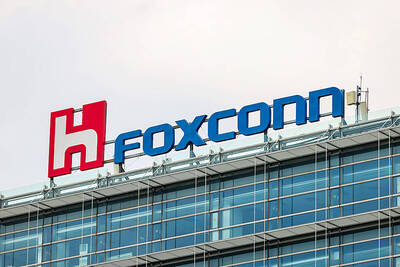Hitachi Ltd, the world's fourth-largest maker of plasma-screen TVS, will sell its plasma displays to other TV makers, including those in China, to turn around its money-losing flat-panel business.
Hitachi plans to sell 500,000 panels to other TV makers in the six months ending March 31 next year and another 1.2 million units in the year ending March 31, 2010, the Tokyo-based company said in a statement yesterday.
Hitachi and rival Pioneer Corp are losing money on plasma-screen TVs as bigger companies including Matsushita Electric Industrial Co, the world's largest plasma TV maker, and No. 2 Samsung Electronics Co offer lower prices and ship more units to retailers.
"Pursuing volume in sales isn't our priority any more," Makoto Ebata, vice president of Hitachi's information and digital media division, told reporters in Tokyo. "Raising profitability is now our priority."
Hitachi cut its full-year profit forecast by 75 percent on Tuesday and said expenses for restructuring its unprofitable flat-panel TV business will reduce earnings by ?30 billion (US$280 million) in the year ending March 31.
Earnings for the six months ended Sept. 30 were reduced by about ?15 billion due to costs related to stopping production at an older plasma-TV panel factory in Miyazaki Prefecture in southwestern Japan.
Hitachi said yesterday it has set an 80 percent utilization ratio for another of its plasma-panel factories in Miyazaki for the year ending March 2010, up from the present rate of less than 70 percent.
Hitachi, which also makes liquid-crystal-display (LCD) televisions, said yesterday it is targeting sales of 3.6 million flat-panel TVs in fiscal 2010.
It aims to sell 2 million LCD TVs in the 12 months to March 31, 2011, and 1.6 million plasma panel sets, Hitachi said.
The company on Tuesday cut its sales forecast for plasma-screen TVs to 900,000 units for the current fiscal year, from an earlier 1.2 million projection.
In the three months ended Sept. 30, the company had a 7.9 percent share of global plasma TV sales, followed by Pioneer's 6.3 percent share, researcher DisplaySearch said.
Matsushita, Samsung and LG Electronics Inc of South Korea account for more than 70 percent of the market.

SEEKING CLARITY: Washington should not adopt measures that create uncertainties for ‘existing semiconductor investments,’ TSMC said referring to its US$165 billion in the US Taiwan Semiconductor Manufacturing Co (TSMC, 台積電) told the US that any future tariffs on Taiwanese semiconductors could reduce demand for chips and derail its pledge to increase its investment in Arizona. “New import restrictions could jeopardize current US leadership in the competitive technology industry and create uncertainties for many committed semiconductor capital projects in the US, including TSMC Arizona’s significant investment plan in Phoenix,” the chipmaker wrote in a letter to the US Department of Commerce. TSMC issued the warning in response to a solicitation for comments by the department on a possible tariff on semiconductor imports by US President Donald Trump’s

‘FAILED EXPORT CONTROLS’: Jensen Huang said that Washington should maximize the speed of AI diffusion, because not doing so would give competitors an advantage Nvidia Corp cofounder and chief executive officer Jensen Huang (黃仁勳) yesterday criticized the US government’s restrictions on exports of artificial intelligence (AI) chips to China, saying that the policy was a failure and would only spur China to accelerate AI development. The export controls gave China the spirit, motivation and government support to accelerate AI development, Huang told reporters at the Computex trade show in Taipei. The competition in China is already intense, given its strong software capabilities, extensive technology ecosystems and work efficiency, he said. “All in all, the export controls were a failure. The facts would suggest it,” he said. “The US

The government has launched a three-pronged strategy to attract local and international talent, aiming to position Taiwan as a new global hub following Nvidia Corp’s announcement that it has chosen Taipei as the site of its Taiwan headquarters. Nvidia cofounder and CEO Jensen Huang (黃仁勳) on Monday last week announced during his keynote speech at the Computex trade show in Taipei that the Nvidia Constellation, the company’s planned Taiwan headquarters, would be located in the Beitou-Shilin Technology Park (北投士林科技園區) in Taipei. Huang’s decision to establish a base in Taiwan is “primarily due to Taiwan’s talent pool and its strength in the semiconductor

French President Emmanuel Macron has expressed gratitude to Hon Hai Precision Industry Co (鴻海精密) for its plan to invest approximately 250 million euros (US$278 million) in a joint venture in France focused on the semiconductor and space industries. On his official X account on Tuesday, Macron thanked Hon Hai, also known globally as Foxconn Technology Group (富士康科技集團), for its investment projects announced at Choose France, a flagship economic summit held on Monday to attract foreign investment. In the post, Macron included a GIF displaying the national flag of the Republic of China (Taiwan), as he did for other foreign investors, including China-based